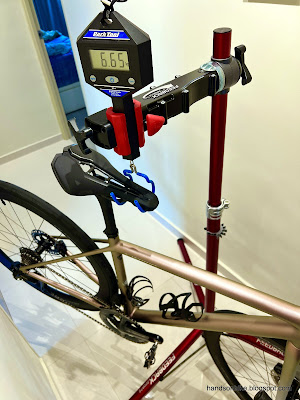I have been using SPD pedals with cage for a long time, ever since my first SPD pedal PD-A530. Based on what I understand, the pedal cage around the outer perimeter of the pedal helps to keep the foot on the pedal, when you are not clipped in securely yet. If there is no pedal cage, there is only a small contact area on the pedal, which may allow your foot to slip if you missed clipping in.
Another reason for having a pedal cage is to allow pedaling when not using SPD shoes, as the wider platform allows sufficient grip even when not clipped in.
Then, I had the chance to test the Garmin Rally XC200 power meter SPD pedals. These pedals do not have a pedal cage.
During that time, I realized that despite the absence of the pedal cage, my foot did not slip off the pedal. Also, from my observation, the front and rear of the pedal cage actually does not touch the shoe at all.
My conclusion was that if I only plan to ride the bike using SPD cycling shoes, the pedal cage is unnecessary as it does not provide any additional support or grip. I have used so many different XTR and Deore XT trail pedals prior to this.
The Specialized Aethos is such a bike, where I will likely ride the bike only with SPD shoes and with full cycling attire. Therefore, I decided to get a MTB SPD pedal without the pedal cage in order to minimize the weight of the bike. One of the lightest one that I can find is the XTR PD-M9100, while the Trail version is PD-M9120.
PD-M9120 Trail pedals on the left, M9100 Race spec on the right.
Nice and shiny new pedals
Without the pedal cage, these pedals are really small.
The surface finishing on the steel SPD mechanism is a darker chrome colour compared to other grades.
Shoe contact points on the inside and outside edges of the pedals have a machined finish.
XTR PD-M9100 pedals are just 312 grams, which is the lightest dual sided SPD pedal from Shimano.
In comparison, here are the weights of other SPD pedals.
Weight per pair
XTR PD-M9020: 372 grams
XTR PD-M9120: 394 grams
Deore XT PD-M8020: 402 grams
Deore XT PD-M8120: 430 grams
GRX PD-ME700: 480 grams
Garmin Rally XC200: 443 grams
These new PD-M9100 pedals save 70 grams over the older PD-M9020, which is quite substantial if every gram counts.
XC200 vs M9100 pedals. Similar in size when viewed from the top.
From the side, the XC200 pedals are much thicker due to the power meter components inside the spindle.
Replacing the XTR PD-M9020 pedals with the new XTR PD-M9100 pedals on the Specialized Aethos was easy. See how it looks below!
PD-M9100 pedals on the older Dura-Ace R9100 left crank arm with power meter.
Dura-Ace and XTR components used together, similar to that on the Focus Paralane.
With these XTR PD-M9100 SPD pedals, it saves some weight over the trail version. Since I will always ride the Aethos with SPD cycling shoes, a pedal cage is not necessary for foot stability.
Actual bike weight with these new PD-M9100 pedals and bottle cages.
As already accounted for in the earlier post, the full bike weighs about 6.6 kg when these PD-M9100 pedals are used. I am pleased with how lightweight the Specialized Aethos is.












No comments:
Post a Comment
Every comment is moderated before publishing due to spam bots. If you don't see your comment yet, it is likely that it is currently being reviewed. Thank you for your patience!